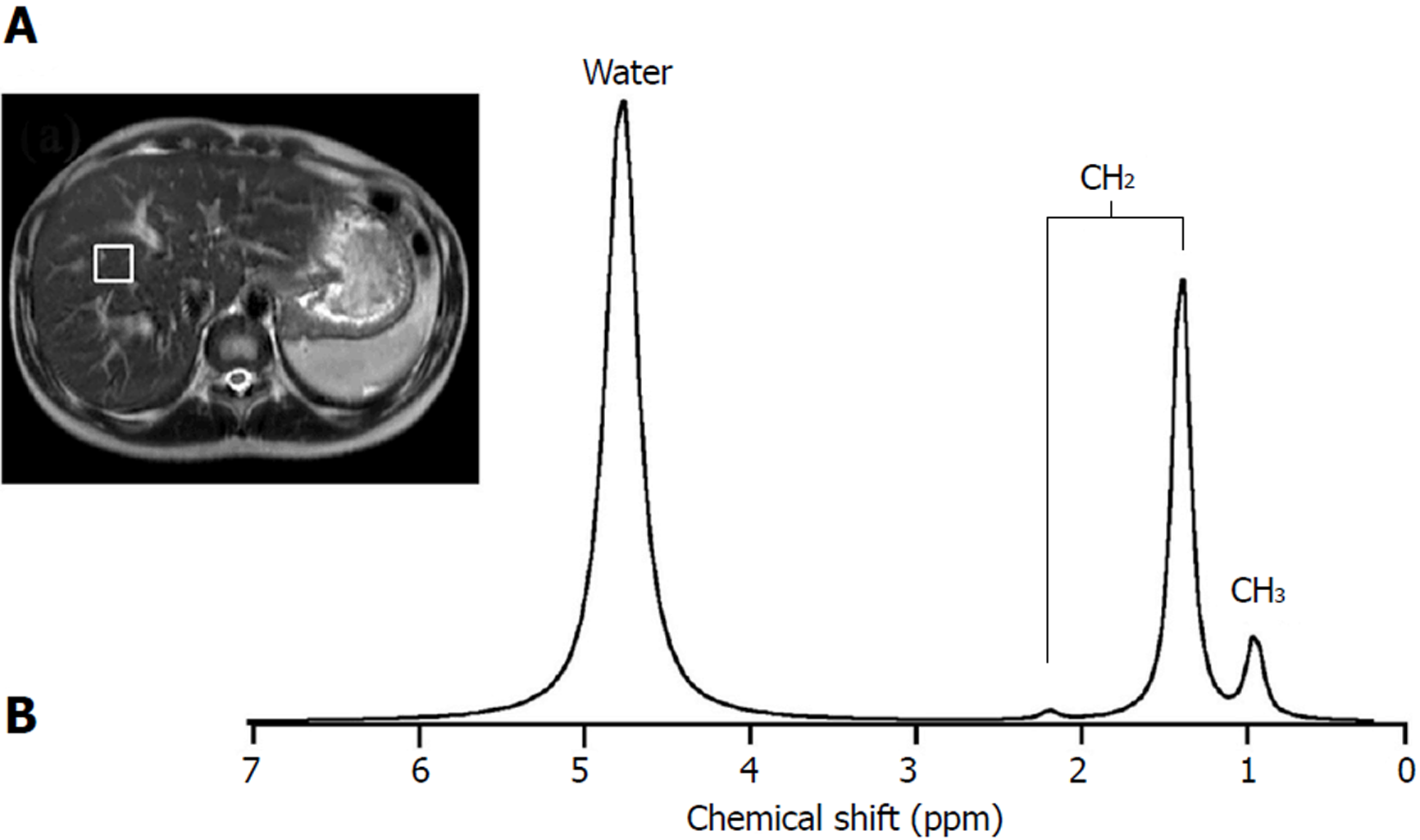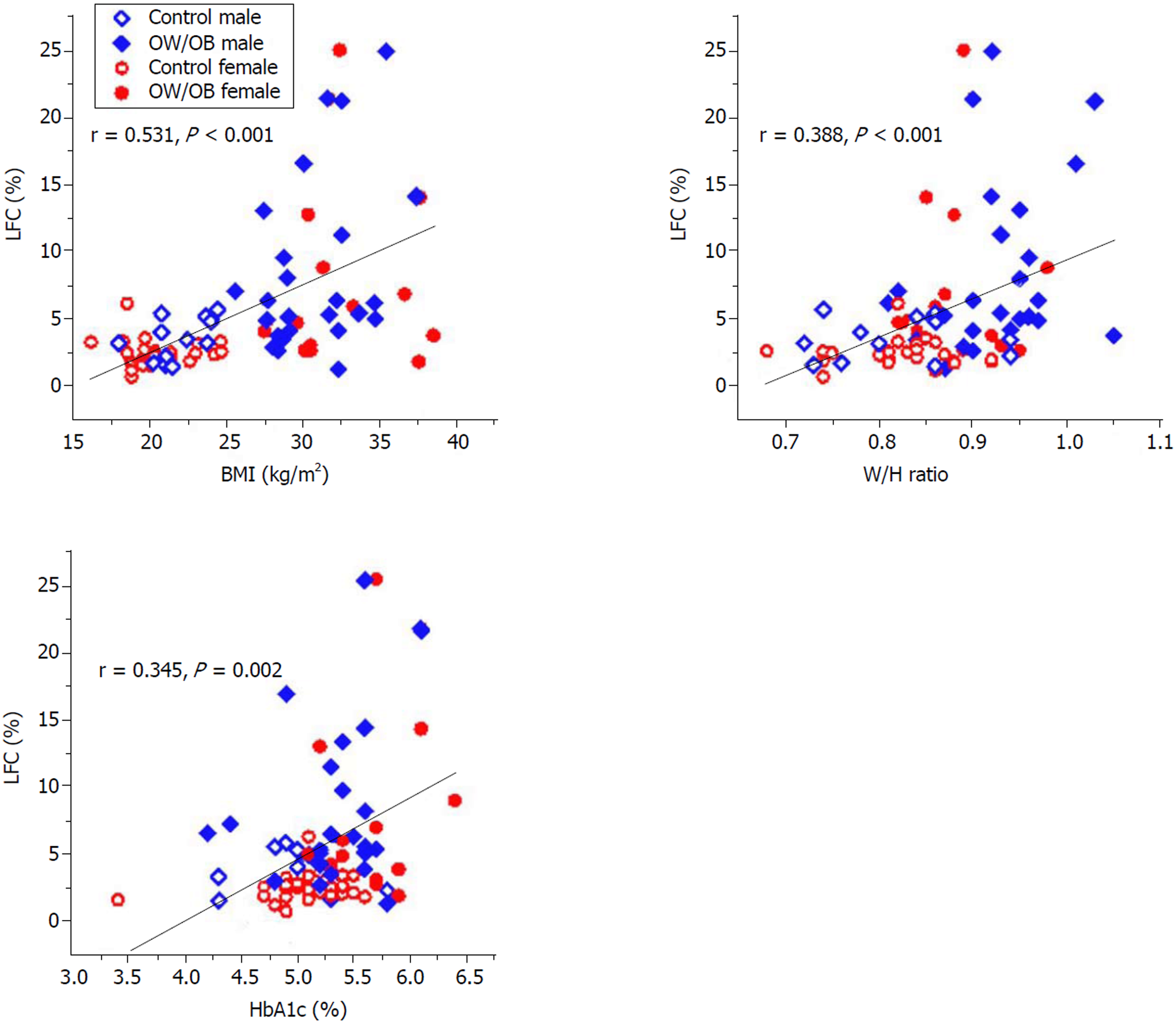Copyright
©The Author(s) 2018.
World J Hepatol. Dec 27, 2018; 10(12): 924-933
Published online Dec 27, 2018. doi: 10.4254/wjh.v10.i12.924
Published online Dec 27, 2018. doi: 10.4254/wjh.v10.i12.924
Figure 1 Proton magnetic resonance spectroscopy technique was used for liver fat assessment.
Water peak was shown occurring at 4.72 ppm, peaks in fat for CH3 occurred at 0.9 ppm, and CH2 peaked at 1.3 ppm and 2.1 ppm. A: Magnetic resonance imaging axial image of abdomen show voxel localization in right lobe liver for liver fat content quantification. B: Representative fitted proton magnetic resonance spectroscopy spectrum of right lobe liver.
Figure 2 Pearson correlation coefficient (r) and data distribution by sex in each group between body mass index, waist-to-hip ratio, glycosylated hemoglobin, and liver fat content as measured by proton magnetic resonance spectroscopy.
BMI: Body mass index; HbA1c: Glycosylated hemoglobin; LFC: Liver fat content; W/H ratio: Waist-to-hip ratio.
Figure 3 Pearson correlation between glycosylated hemoglobin (circle in red, lower x axis), fasting plasma glucose (star in blue, upper X axis), and liver fat content as measured by proton magnetic resonance spectroscopy.
BMI: Body mass index; FG: Fasting plasma glucose; HbA1c: Glycosylated hemoglobin; LFC: Liver fat content.
- Citation: Pasanta D, Tungjai M, Chancharunee S, Sajomsang W, Kothan S. Body mass index and its effects on liver fat content in overweight and obese young adults by proton magnetic resonance spectroscopy technique. World J Hepatol 2018; 10(12): 924-933
- URL: https://www.wjgnet.com/1948-5182/full/v10/i12/924.htm
- DOI: https://dx.doi.org/10.4254/wjh.v10.i12.924











